Causes and Effects of Climate Changes
The negative effects of climate change grow with time and threaten the very existence of both human beings and our planet’s unique biodiversity. Climate change is the transformation in the distribution patterns of weather or changes in average weather conditions of a place or the whole world over long periods.
The change can be positive, where there is an observed increase in average measurements of weather conditions, or negative, where a decrease in weather conditions is observed. Both of these changes have negatively affected the earth largely (Hardy, x). Such changes in climate have become a major global problem
Climate changes have many causes. These changes can be natural or those caused by man. All these lead to increase in green house gases in the atmosphere, which disrupt the balance they keep on the atmosphere. Such natural causes include solar variations, ocean currents, volcanic eruptions and changes in the earth’s tilt on its orbit (Hardy, 62).
Human causes come about through agriculture, industry, transport, and use of various forms of energy at home. All these can cause small but critical changes, which can lead to effects like global warming.
Effects of climate change are far reaching. They can be in physical, ecological or economic spheres. In the physical sphere, climate change can lead to increase in global temperatures, extreme weather adulteration of important biogeochemical cycles like the carbon cycle.
In the social system, climate change affects settlement patterns and distribution of people, agricultural production declines, and, thus affects food supply (Doering, 1). This in turn has a negative effect on the economic status of the people who have to incur much expense to mitigate these effects.
In conclusion, there are many negative effects of climate change caused by both natural forces and man’s activities. Human activities contribute substantially to climate change and this in turn destroys his ecosystem, activities, biodiversity and livelihood at large.

Works cited
Hardy, John T. Climate Change: Causes, Effects and Solutions. Chichester: John Wiley and sons, 2003. Print.
Doering, Charles O. Effects of Climate Change and Variability on Agricultural Systems. Boston, MA: Kluwer Academic Publishers. 2002. Print.
- The Advantages and Disadvantages of Biomass Energy
- Refinery Wastewater Management
- Critical Care and Advanced Practice Nurses
- Richard Brautigan: Scarlatti Tilt
- Environmental Studies: The Florida Everglades
- Renewable Energy: Geothermal Energy
- Climate Change and Its Effects on Indigenous Peoples
- Scarcity of Water in Saudi Arabia, Africa and Australia
- Renewable Energy: Wind Generating Plant for the Local Community
- Nuclear Power Station Advantages and Disadvantages
- Chicago (A-D)
- Chicago (N-B)
IvyPanda. (2019, June 6). Causes and Effects of Climate Changes. https://ivypanda.com/essays/causes-and-effects-of-climate-changes/
"Causes and Effects of Climate Changes." IvyPanda , 6 June 2019, ivypanda.com/essays/causes-and-effects-of-climate-changes/.
IvyPanda . (2019) 'Causes and Effects of Climate Changes'. 6 June.
IvyPanda . 2019. "Causes and Effects of Climate Changes." June 6, 2019. https://ivypanda.com/essays/causes-and-effects-of-climate-changes/.
1. IvyPanda . "Causes and Effects of Climate Changes." June 6, 2019. https://ivypanda.com/essays/causes-and-effects-of-climate-changes/.
Bibliography
IvyPanda . "Causes and Effects of Climate Changes." June 6, 2019. https://ivypanda.com/essays/causes-and-effects-of-climate-changes/.
- To find inspiration for your paper and overcome writer’s block
- As a source of information (ensure proper referencing)
- As a template for you assignment
Home — Essay Samples — Environment — Climate Change — Climate Change: Causes, Effects, and Solutions
Climate Change: Causes, Effects, and Solutions
- Categories: Climate Change
About this sample

Words: 663 |
Published: Jan 29, 2024
Words: 663 | Page: 1 | 4 min read
Table of contents
Introduction, causes of climate change, effects of climate change, efforts to combat climate change, challenges and future outlook.
- Intergovernmental Panel on Climate Change (IPCC). " Climate Change 2021: The Physical Science Basis." IPCC Sixth Assessment Report, 2021. https://www.ipcc.ch/report/ar6/wg1/
- United Nations Framework Convention on Climate Change (UNFCCC). "The Paris Agreement." UNFCCC, 2015. https://unfccc.int/process-and-meetings/the-paris-agreement/the-paris-agreement
- United Nations. "Sustainable Development Goals." United Nations, https://sdgs.un.org/goals

Cite this Essay
To export a reference to this article please select a referencing style below:
Let us write you an essay from scratch
- 450+ experts on 30 subjects ready to help
- Custom essay delivered in as few as 3 hours
Get high-quality help

Dr Jacklynne
Verified writer
- Expert in: Environment
+ 120 experts online
By clicking “Check Writers’ Offers”, you agree to our terms of service and privacy policy . We’ll occasionally send you promo and account related email
No need to pay just yet!
Related Essays
2 pages / 901 words
3 pages / 1228 words
1 pages / 432 words
2 pages / 776 words
Remember! This is just a sample.
You can get your custom paper by one of our expert writers.
121 writers online
Still can’t find what you need?
Browse our vast selection of original essay samples, each expertly formatted and styled
Related Essays on Climate Change
The significance of understanding the core concepts and causes of climate change cannot be overstated. Climate change is a complex and multifaceted phenomenon that poses profound challenges to our planet and society. In order to [...]
In conclusion, the memo on global warming provides a valuable starting point for our analysis of this pressing issue. By adhering to formal academic writing standards, critically engaging with the arguments presented, and [...]
Wind energy, simply put, is the process of harnessing the power of the wind to generate electricity. It is a renewable and clean source of energy that holds immense importance in our efforts to combat climate change and [...]
In his book Eaarth: Making a Life on a Tough New Planet, environmentalist Bill McKibben presents a compelling argument for the urgency of addressing climate change and its impacts on our planet. As the effects of climate [...]
Climate change refers to the disruption of weather patterns due to the change in chemical balance of the ecosystem. It is mainly caused by greenhouse gases and other land and air pollutants that are present predominantly due to [...]
The impact of climate change in Bangladesh, discussed in this essay, is a pressing issue due to the country's vulnerability to natural disasters. Bangladesh's low land, high population, and poverty make it [...]
Related Topics
By clicking “Send”, you agree to our Terms of service and Privacy statement . We will occasionally send you account related emails.
Where do you want us to send this sample?
By clicking “Continue”, you agree to our terms of service and privacy policy.
Be careful. This essay is not unique
This essay was donated by a student and is likely to have been used and submitted before
Download this Sample
Free samples may contain mistakes and not unique parts
Sorry, we could not paraphrase this essay. Our professional writers can rewrite it and get you a unique paper.
Please check your inbox.
We can write you a custom essay that will follow your exact instructions and meet the deadlines. Let's fix your grades together!
Get Your Personalized Essay in 3 Hours or Less!
We use cookies to personalyze your web-site experience. By continuing we’ll assume you board with our cookie policy .
- Instructions Followed To The Letter
- Deadlines Met At Every Stage
- Unique And Plagiarism Free

The Causes of Climate Change
Human activities are driving the global warming trend observed since the mid-20th century.

- The greenhouse effect is essential to life on Earth, but human-made emissions in the atmosphere are trapping and slowing heat loss to space.
- Five key greenhouse gases are carbon dioxide, nitrous oxide, methane, chlorofluorocarbons, and water vapor.
- While the Sun has played a role in past climate changes, the evidence shows the current warming cannot be explained by the Sun.
Increasing Greenhouses Gases Are Warming the Planet
Scientists attribute the global warming trend observed since the mid-20 th century to the human expansion of the "greenhouse effect" 1 — warming that results when the atmosphere traps heat radiating from Earth toward space.
Life on Earth depends on energy coming from the Sun. About half the light energy reaching Earth's atmosphere passes through the air and clouds to the surface, where it is absorbed and radiated in the form of infrared heat. About 90% of this heat is then absorbed by greenhouse gases and re-radiated, slowing heat loss to space.
Four Major Gases That Contribute to the Greenhouse Effect
Carbon dioxide.
A vital component of the atmosphere, carbon dioxide (CO 2 ) is released through natural processes (like volcanic eruptions) and through human activities, such as burning fossil fuels and deforestation.
Like many atmospheric gases, methane comes from both natural and human-caused sources. Methane comes from plant-matter breakdown in wetlands and is also released from landfills and rice farming. Livestock animals emit methane from their digestion and manure. Leaks from fossil fuel production and transportation are another major source of methane, and natural gas is 70% to 90% methane.
Nitrous Oxide
A potent greenhouse gas produced by farming practices, nitrous oxide is released during commercial and organic fertilizer production and use. Nitrous oxide also comes from burning fossil fuels and burning vegetation and has increased by 18% in the last 100 years.
Chlorofluorocarbons (CFCs)
These chemical compounds do not exist in nature – they are entirely of industrial origin. They were used as refrigerants, solvents (a substance that dissolves others), and spray can propellants.
FORCING: Something acting upon Earth's climate that causes a change in how energy flows through it (such as long-lasting, heat-trapping gases - also known as greenhouse gases). These gases slow outgoing heat in the atmosphere and cause the planet to warm.
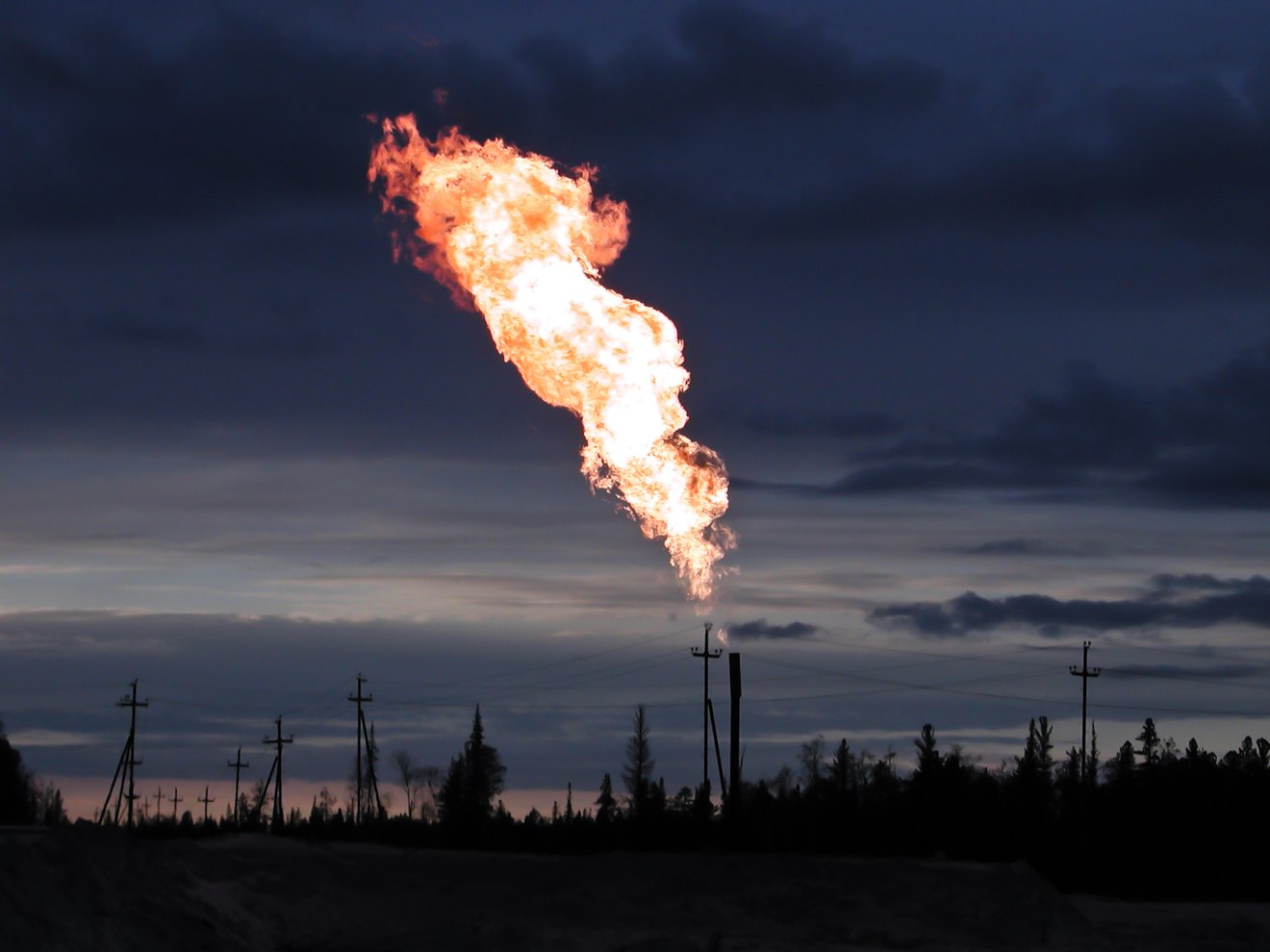
Another Gas That Contributes to the Greenhouse Effect:
Water vapor.
Water vapor is the most abundant greenhouse gas, but because the warming ocean increases the amount of it in our atmosphere, it is not a direct cause of climate change. Credit: John Fowler on Unsplash
FEEDBACKS: A process where something is either amplified or reduced as time goes on, such as water vapor increasing as Earth warms leading to even more warming.
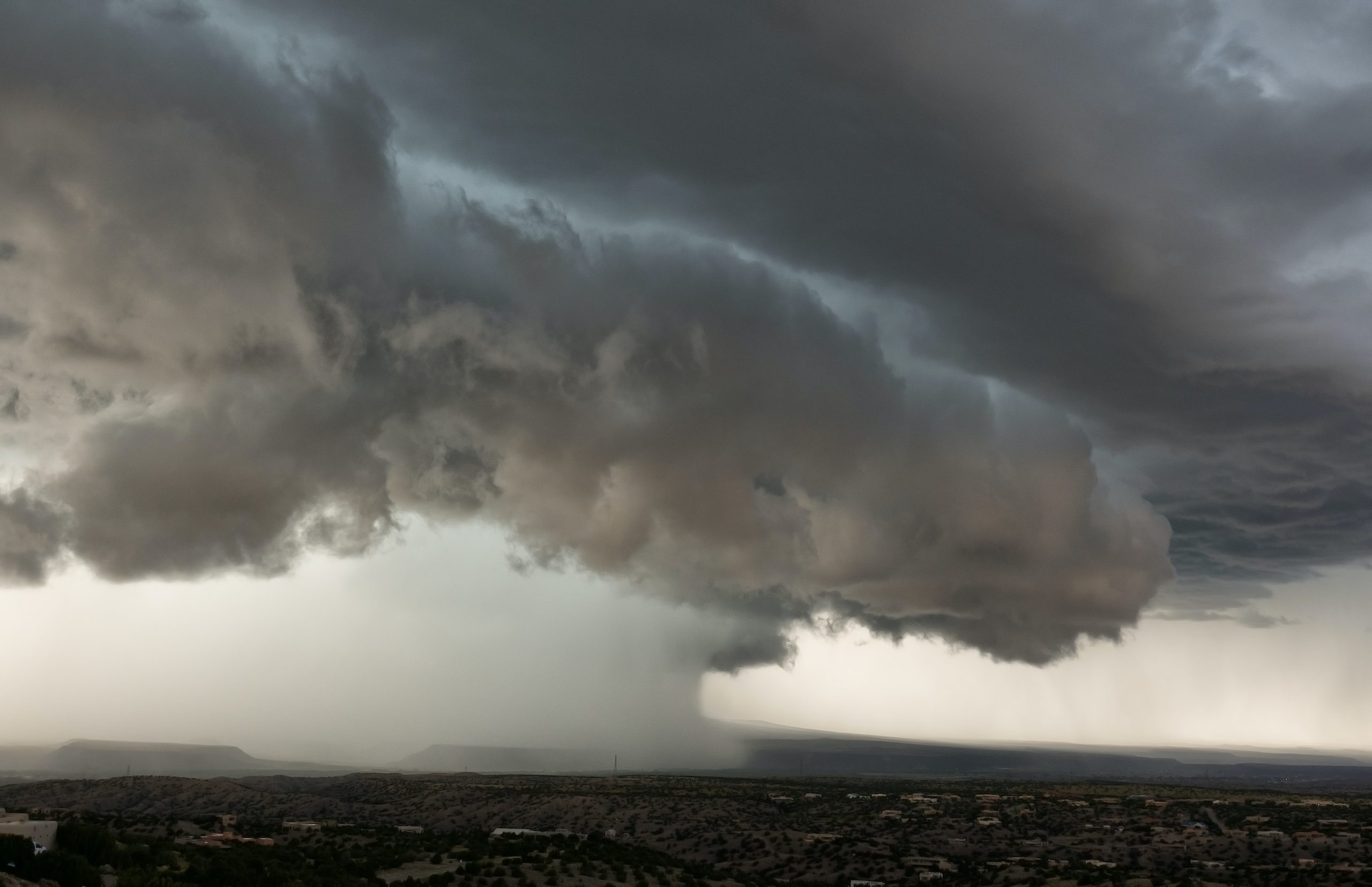
Human Activity Is the Cause of Increased Greenhouse Gas Concentrations
Over the last century, burning of fossil fuels like coal and oil has increased the concentration of atmospheric carbon dioxide (CO 2 ). This increase happens because the coal or oil burning process combines carbon with oxygen in the air to make CO 2 . To a lesser extent, clearing of land for agriculture, industry, and other human activities has increased concentrations of greenhouse gases.
The industrial activities that our modern civilization depends upon have raised atmospheric carbon dioxide levels by nearly 50% since 1750 2 . This increase is due to human activities, because scientists can see a distinctive isotopic fingerprint in the atmosphere.
In its Sixth Assessment Report, the Intergovernmental Panel on Climate Change, composed of scientific experts from countries all over the world, concluded that it is unequivocal that the increase of CO 2 , methane, and nitrous oxide in the atmosphere over the industrial era is the result of human activities and that human influence is the principal driver of many changes observed across the atmosphere, ocean, cryosphere and biosphere.
"Since systematic scientific assessments began in the 1970s, the influence of human activity on the warming of the climate system has evolved from theory to established fact."

Intergovernmental Panel on Climate Change
The panel's AR6 Working Group I (WGI) Summary for Policymakers report is online at https://www.ipcc.ch/report/ar6/wg1/ .
Evidence Shows That Current Global Warming Cannot Be Explained by Solar Irradiance
Scientists use a metric called Total Solar Irradiance (TSI) to measure the changes in energy the Earth receives from the Sun. TSI incorporates the 11-year solar cycle and solar flares/storms from the Sun's surface.
Studies show that solar variability has played a role in past climate changes. For example, a decrease in solar activity coupled with increased volcanic activity helped trigger the Little Ice Age.

But several lines of evidence show that current global warming cannot be explained by changes in energy from the Sun:
- Since 1750, the average amount of energy from the Sun either remained constant or decreased slightly 3 .
- If a more active Sun caused the warming, scientists would expect warmer temperatures in all layers of the atmosphere. Instead, they have observed a cooling in the upper atmosphere and a warming at the surface and lower parts of the atmosphere. That's because greenhouse gases are slowing heat loss from the lower atmosphere.
- Climate models that include solar irradiance changes can’t reproduce the observed temperature trend over the past century or more without including a rise in greenhouse gases.
1. IPCC 6 th Assessment Report, WG1, Summary for Policy Makers, Sections A, “ The Current State of the Climate ”
IPCC 6 th Assessment Report, WG1, Technical Summary, Sections TS.1.2, TS.2.1 and TS.3.1
2. P. Friedlingstein, et al., 2022: “Global Carbon Budget 2022”, Earth System Science Data ( 11 Nov 2022): 4811–4900. https://doi.org/10.5194/essd-14-4811-2022
3. IPCC 6 th Assessment Report, WG1, Chapter 2, Section 2.2.1, “ Solar and Orbital Forcing ” IPCC 6 th Assessment Report, WG1, Chapter 7, Sections 7.3.4.4, 7.3.5.2, Figure 7.6, “ Solar ” M. Lockwood and W.T. Ball, Placing limits on long-term variations in quiet-Sun irradiance and their contribution to total solar irradiance and solar radiative forcing of climate,” Proceedings of the Royal Society A , 476, issue 2228 (24 June 2020): https://doi 10.1098/rspa.2020.0077
Header image credit: Pixabay/stevepb Four Major Gases image credit: Adobe Stock/Ilya Glovatskiy
Discover More Topics From NASA
Explore Earth Science

Earth Science in Action

Earth Science Data
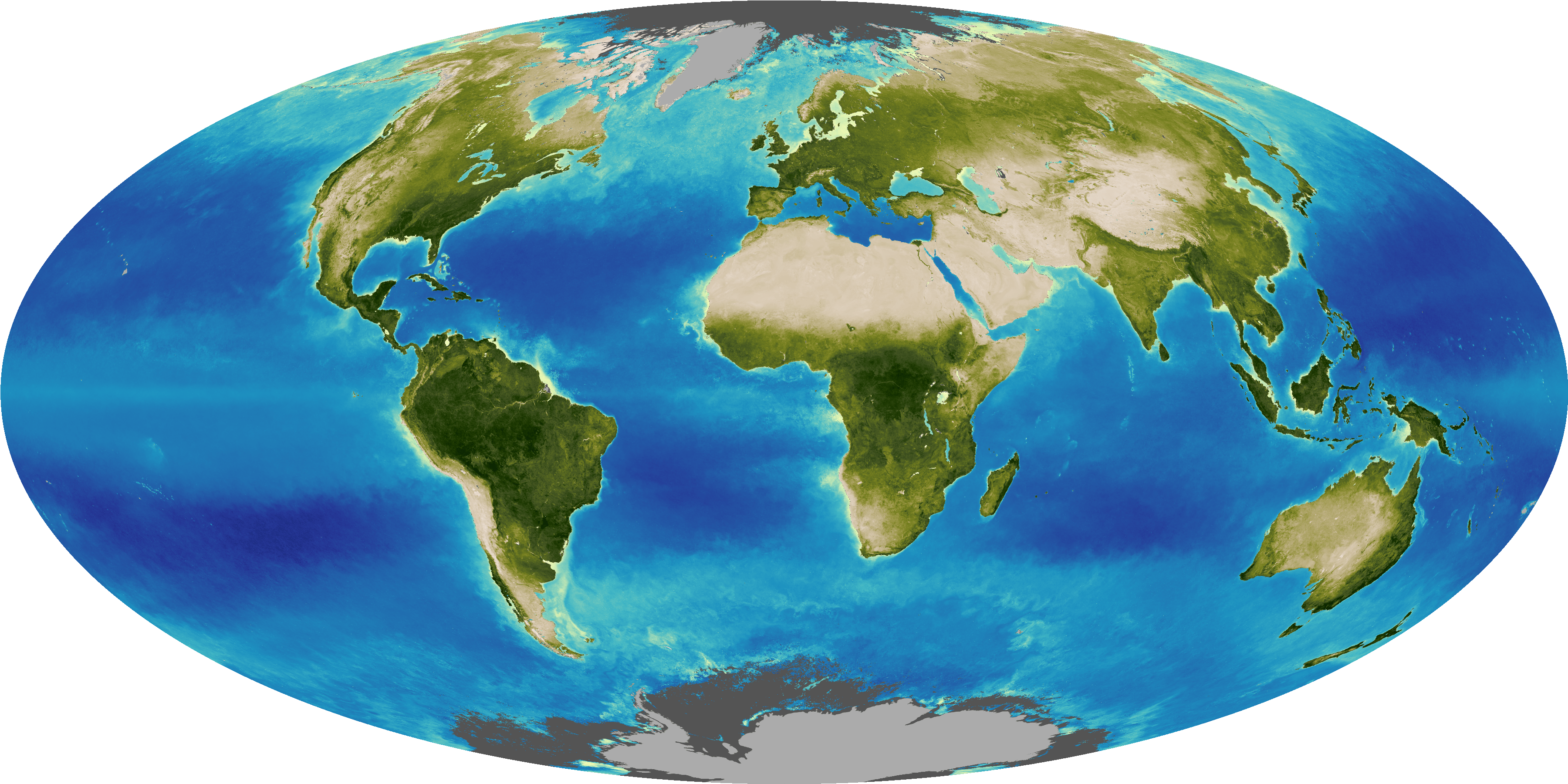
Facts About Earth


Search the United Nations
- What Is Climate Change
- Myth Busters
- Renewable Energy
- Finance & Justice
- Initiatives
- Sustainable Development Goals
- Paris Agreement
- Climate Conferences
- Press Material
- Communications Tips
Causes and Effects of Climate Change
Fossil fuels – coal, oil and gas – are by far the largest contributor to global climate change, accounting for over 75 per cent of global greenhouse gas emissions and nearly 90 per cent of all carbon dioxide emissions.
As greenhouse gas emissions blanket the Earth, they trap the sun’s heat. This leads to global warming and climate change. The world is now warming faster than at any point in recorded history. Warmer temperatures over time are changing weather patterns and disrupting the usual balance of nature. This poses many risks to human beings and all other forms of life on Earth.
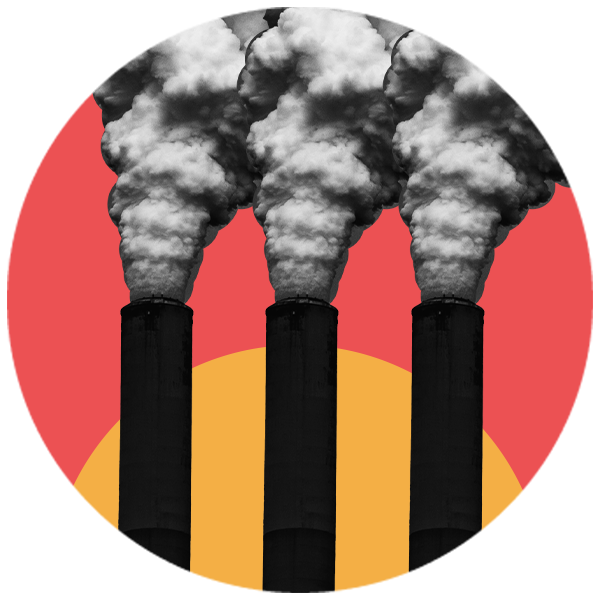
Causes of Climate Change
Generating power
Generating electricity and heat by burning fossil fuels causes a large chunk of global emissions. Most electricity is still generated by burning coal, oil, or gas, which produces carbon dioxide and nitrous oxide – powerful greenhouse gases that blanket the Earth and trap the sun’s heat. Globally, a bit more than a quarter of electricity comes from wind, solar and other renewable sources which, as opposed to fossil fuels, emit little to no greenhouse gases or pollutants into the air.
Manufacturing goods
Manufacturing and industry produce emissions, mostly from burning fossil fuels to produce energy for making things like cement, iron, steel, electronics, plastics, clothes, and other goods. Mining and other industrial processes also release gases, as does the construction industry. Machines used in the manufacturing process often run on coal, oil, or gas; and some materials, like plastics, are made from chemicals sourced from fossil fuels. The manufacturing industry is one of the largest contributors to greenhouse gas emissions worldwide.
Cutting down forests
Cutting down forests to create farms or pastures, or for other reasons, causes emissions, since trees, when they are cut, release the carbon they have been storing. Each year approximately 12 million hectares of forest are destroyed. Since forests absorb carbon dioxide, destroying them also limits nature’s ability to keep emissions out of the atmosphere. Deforestation, together with agriculture and other land use changes, is responsible for roughly a quarter of global greenhouse gas emissions.
Using transportation
Most cars, trucks, ships, and planes run on fossil fuels. That makes transportation a major contributor of greenhouse gases, especially carbon-dioxide emissions. Road vehicles account for the largest part, due to the combustion of petroleum-based products, like gasoline, in internal combustion engines. But emissions from ships and planes continue to grow. Transport accounts for nearly one quarter of global energy-related carbon-dioxide emissions. And trends point to a significant increase in energy use for transport over the coming years.
Producing food
Producing food causes emissions of carbon dioxide, methane, and other greenhouse gases in various ways, including through deforestation and clearing of land for agriculture and grazing, digestion by cows and sheep, the production and use of fertilizers and manure for growing crops, and the use of energy to run farm equipment or fishing boats, usually with fossil fuels. All this makes food production a major contributor to climate change. And greenhouse gas emissions also come from packaging and distributing food.
Powering buildings
Globally, residential and commercial buildings consume over half of all electricity. As they continue to draw on coal, oil, and natural gas for heating and cooling, they emit significant quantities of greenhouse gas emissions. Growing energy demand for heating and cooling, with rising air-conditioner ownership, as well as increased electricity consumption for lighting, appliances, and connected devices, has contributed to a rise in energy-related carbon-dioxide emissions from buildings in recent years.
Consuming too much
Your home and use of power, how you move around, what you eat and how much you throw away all contribute to greenhouse gas emissions. So does the consumption of goods such as clothing, electronics, and plastics. A large chunk of global greenhouse gas emissions are linked to private households. Our lifestyles have a profound impact on our planet. The wealthiest bear the greatest responsibility: the richest 1 per cent of the global population combined account for more greenhouse gas emissions than the poorest 50 per cent.
Based on various UN sources
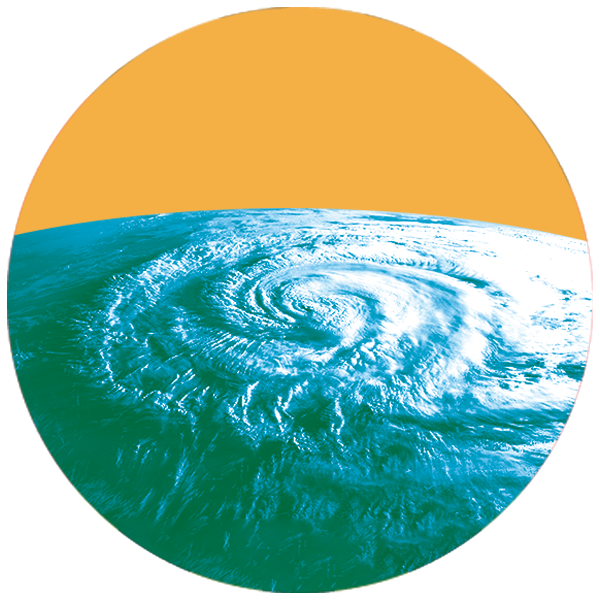
Effects of Climate Change
Hotter temperatures
As greenhouse gas concentrations rise, so does the global surface temperature. The last decade, 2011-2020, is the warmest on record. Since the 1980s, each decade has been warmer than the previous one. Nearly all land areas are seeing more hot days and heat waves. Higher temperatures increase heat-related illnesses and make working outdoors more difficult. Wildfires start more easily and spread more rapidly when conditions are hotter. Temperatures in the Arctic have warmed at least twice as fast as the global average.
More severe storms
Destructive storms have become more intense and more frequent in many regions. As temperatures rise, more moisture evaporates, which exacerbates extreme rainfall and flooding, causing more destructive storms. The frequency and extent of tropical storms is also affected by the warming ocean. Cyclones, hurricanes, and typhoons feed on warm waters at the ocean surface. Such storms often destroy homes and communities, causing deaths and huge economic losses.
Increased drought
Climate change is changing water availability, making it scarcer in more regions. Global warming exacerbates water shortages in already water-stressed regions and is leading to an increased risk of agricultural droughts affecting crops, and ecological droughts increasing the vulnerability of ecosystems. Droughts can also stir destructive sand and dust storms that can move billions of tons of sand across continents. Deserts are expanding, reducing land for growing food. Many people now face the threat of not having enough water on a regular basis.
A warming, rising ocean
The ocean soaks up most of the heat from global warming. The rate at which the ocean is warming strongly increased over the past two decades, across all depths of the ocean. As the ocean warms, its volume increases since water expands as it gets warmer. Melting ice sheets also cause sea levels to rise, threatening coastal and island communities. In addition, the ocean absorbs carbon dioxide, keeping it from the atmosphere. But more carbon dioxide makes the ocean more acidic, which endangers marine life and coral reefs.
Loss of species
Climate change poses risks to the survival of species on land and in the ocean. These risks increase as temperatures climb. Exacerbated by climate change, the world is losing species at a rate 1,000 times greater than at any other time in recorded human history. One million species are at risk of becoming extinct within the next few decades. Forest fires, extreme weather, and invasive pests and diseases are among many threats related to climate change. Some species will be able to relocate and survive, but others will not.
Not enough food
Changes in the climate and increases in extreme weather events are among the reasons behind a global rise in hunger and poor nutrition. Fisheries, crops, and livestock may be destroyed or become less productive. With the ocean becoming more acidic, marine resources that feed billions of people are at risk. Changes in snow and ice cover in many Arctic regions have disrupted food supplies from herding, hunting, and fishing. Heat stress can diminish water and grasslands for grazing, causing declining crop yields and affecting livestock.
More health risks
Climate change is the single biggest health threat facing humanity. Climate impacts are already harming health, through air pollution, disease, extreme weather events, forced displacement, pressures on mental health, and increased hunger and poor nutrition in places where people cannot grow or find sufficient food. Every year, environmental factors take the lives of around 13 million people. Changing weather patterns are expanding diseases, and extreme weather events increase deaths and make it difficult for health care systems to keep up.
Poverty and displacement
Climate change increases the factors that put and keep people in poverty. Floods may sweep away urban slums, destroying homes and livelihoods. Heat can make it difficult to work in outdoor jobs. Water scarcity may affect crops. Over the past decade (2010–2019), weather-related events displaced an estimated 23.1 million people on average each year, leaving many more vulnerable to poverty. Most refugees come from countries that are most vulnerable and least ready to adapt to the impacts of climate change.
Learn more about...
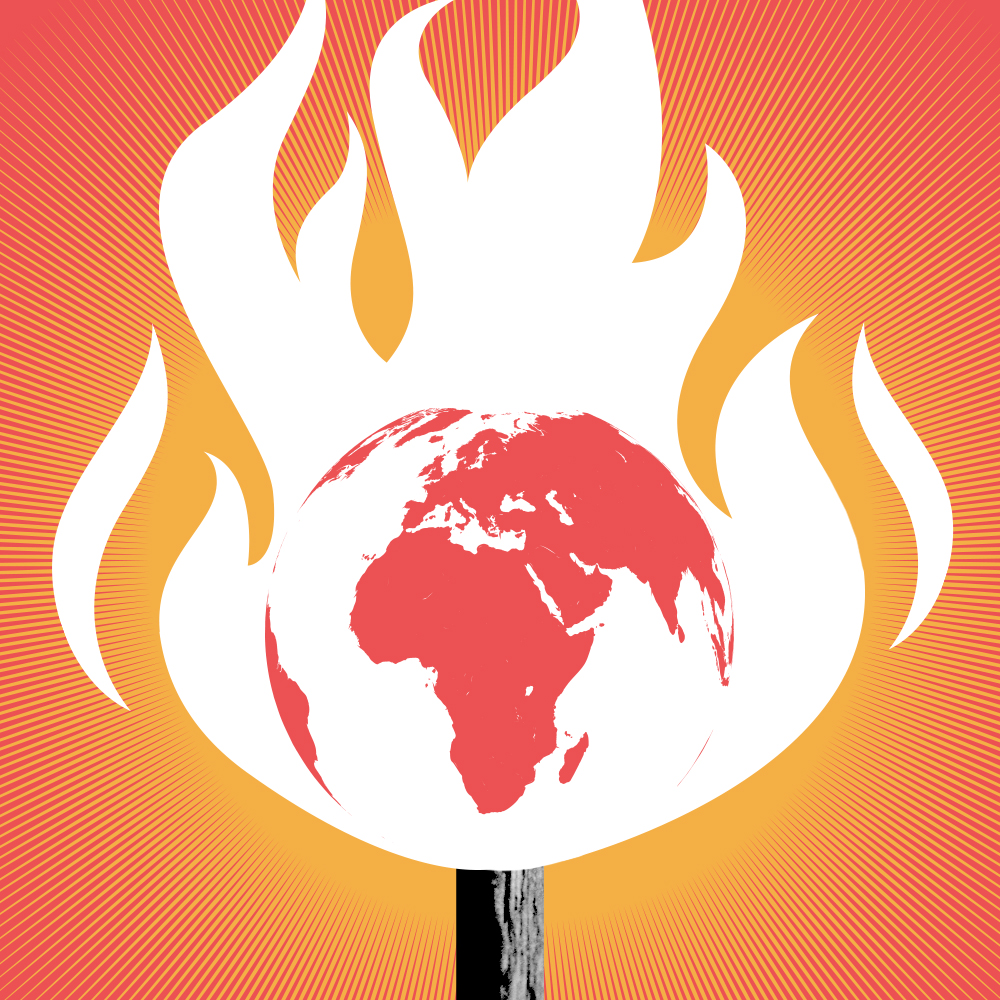
What is climate change?
Our climate 101 offers a quick take on the how and why of climate change.

What is “net zero”, why is it important, and is the world on track to reach it?
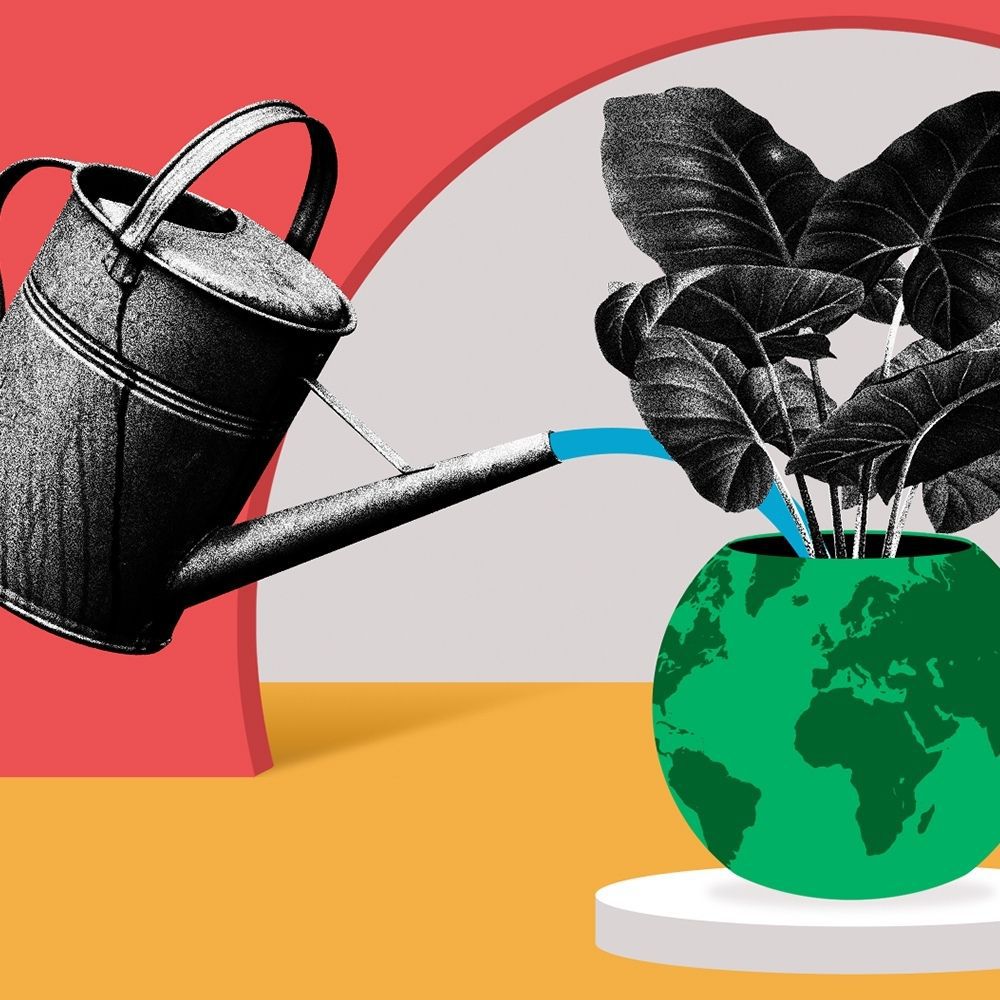

Initiatives for action
Read about global initiatives aimed at speeding up the pace of climate action.
Defend our planet from the Trump agenda
NRDC will fight as long and hard as it takes to stop the new administration's disastrous plans to gut environmental protections. Start an urgent monthly gift to help our lawyers, policy experts, and scientists defend our planet against Project 2025 at this critical moment. Donations will be MATCHED $1-for-$1.

What Are the Causes of Climate Change?
We can’t fight climate change without understanding what drives it.
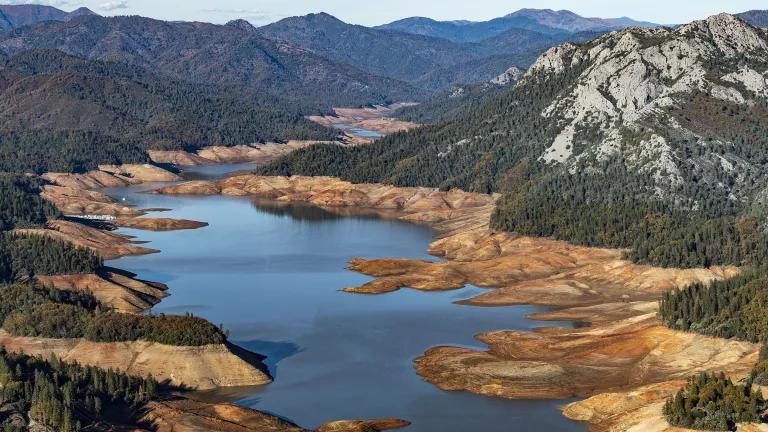
Low water levels at Shasta Lake, California, following a historic drought in October 2021
Andrew Innerarity/California Department of Water Resources

- Share this page block
At the root of climate change is the phenomenon known as the greenhouse effect , the term scientists use to describe the way that certain atmospheric gases “trap” heat that would otherwise radiate upward, from the planet’s surface, into outer space. On the one hand, we have the greenhouse effect to thank for the presence of life on earth; without it, our planet would be cold and unlivable.
But beginning in the mid- to late-19th century, human activity began pushing the greenhouse effect to new levels. The result? A planet that’s warmer right now than at any other point in human history, and getting ever warmer. This global warming has, in turn, dramatically altered natural cycles and weather patterns, with impacts that include extreme heat, protracted drought, increased flooding, more intense storms, and rising sea levels. Taken together, these miserable and sometimes deadly effects are what have come to be known as climate change .
Detailing and discussing the human causes of climate change isn’t about shaming people, or trying to make them feel guilty for their choices. It’s about defining the problem so that we can arrive at effective solutions. And we must honestly address its origins—even though it can sometimes be difficult, or even uncomfortable, to do so. Human civilization has made extraordinary productivity leaps, some of which have led to our currently overheated planet. But by harnessing that same ability to innovate and attaching it to a renewed sense of shared responsibility, we can find ways to cool the planet down, fight climate change , and chart a course toward a more just, equitable, and sustainable future.
Here’s a rough breakdown of the factors that are driving climate change.
Natural causes of climate change
Human-driven causes of climate change, transportation, electricity generation, industry & manufacturing, agriculture, oil & gas development, deforestation, our lifestyle choices.
Some amount of climate change can be attributed to natural phenomena. Over the course of Earth’s existence, volcanic eruptions , fluctuations in solar radiation , tectonic shifts , and even small changes in our orbit have all had observable effects on planetary warming and cooling patterns.
But climate records are able to show that today’s global warming—particularly what has occured since the start of the industrial revolution—is happening much, much faster than ever before. According to NASA , “[t]hese natural causes are still in play today, but their influence is too small or they occur too slowly to explain the rapid warming seen in recent decades.” And the records refute the misinformation that natural causes are the main culprits behind climate change, as some in the fossil fuel industry and conservative think tanks would like us to believe.
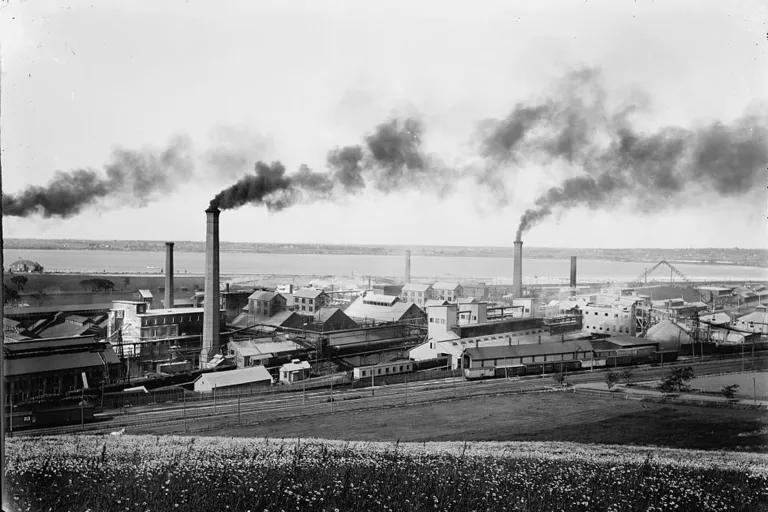
Chemical manufacturing plants emit fumes along Onondaga Lake in Solvay, New York, in the late-19th century. Over time, industrial development severely polluted the local area.
Library of Congress, Prints & Photographs Division, Detroit Publishing Company Collection
Scientists agree that human activity is the primary driver of what we’re seeing now worldwide. (This type of climate change is sometimes referred to as anthropogenic , which is just a way of saying “caused by human beings.”) The unchecked burning of fossil fuels over the past 150 years has drastically increased the presence of atmospheric greenhouse gases, most notably carbon dioxide . At the same time, logging and development have led to the widespread destruction of forests, wetlands, and other carbon sinks —natural resources that store carbon dioxide and prevent it from being released into the atmosphere.
Right now, atmospheric concentrations of greenhouse gases like carbon dioxide, methane , and nitrous oxide are the highest they’ve been in the last 800,000 years . Some greenhouse gases, like hydrochlorofluorocarbons (HFCs) , do not even exist in nature. By continuously pumping these gases into the air, we helped raise the earth’s average temperature by about 1.9 degrees Fahrenheit during the 20th century—which has brought us to our current era of deadly, and increasingly routine, weather extremes. And it’s important to note that while climate change affects everyone in some way, it doesn’t do so equally: All over the world, people of color and those living in economically disadvantaged or politically marginalized communities bear a much larger burden , despite the fact that these communities play a much smaller role in warming the planet.
Our ways of generating power for electricity, heat, and transportation, our built environment and industries, our ways of interacting with the land, and our consumption habits together serve as the primary drivers of climate change. While the percentages of greenhouse gases stemming from each source may fluctuate, the sources themselves remain relatively consistent.
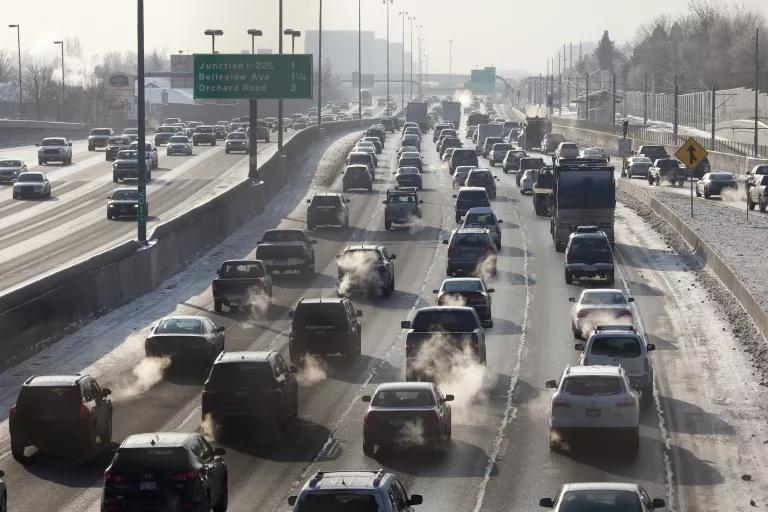
Traffic on Interstate 25 in Denver
David Parsons/iStock
The cars, trucks, ships, and planes that we use to transport ourselves and our goods are a major source of global greenhouse gas emissions. (In the United States, they actually constitute the single-largest source.) Burning petroleum-based fuel in combustion engines releases massive amounts of carbon dioxide into the atmosphere. Passenger cars account for 41 percent of those emissions, with the typical passenger vehicle emitting about 4.6 metric tons of carbon dioxide per year. And trucks are by far the worst polluters on the road. They run almost constantly and largely burn diesel fuel, which is why, despite accounting for just 4 percent of U.S. vehicles, trucks emit 23 percent of all greenhouse gas emissions from transportation.
We can get these numbers down, but we need large-scale investments to get more zero-emission vehicles on the road and increase access to reliable public transit .
As of 2021, nearly 60 percent of the electricity used in the United States comes from the burning of coal, natural gas , and other fossil fuels . Because of the electricity sector’s historical investment in these dirty energy sources, it accounts for roughly a quarter of U.S. greenhouse gas emissions, including carbon dioxide, methane, and nitrous oxide.
That history is undergoing a major change, however: As renewable energy sources like wind and solar become cheaper and easier to develop, utilities are turning to them more frequently. The percentage of clean, renewable energy is growing every year—and with that growth comes a corresponding decrease in pollutants.
But while things are moving in the right direction, they’re not moving fast enough. If we’re to keep the earth’s average temperature from rising more than 1.5 degrees Celsius, which scientists say we must do in order to avoid the very worst impacts of climate change, we have to take every available opportunity to speed up the shift from fossil fuels to renewables in the electricity sector.
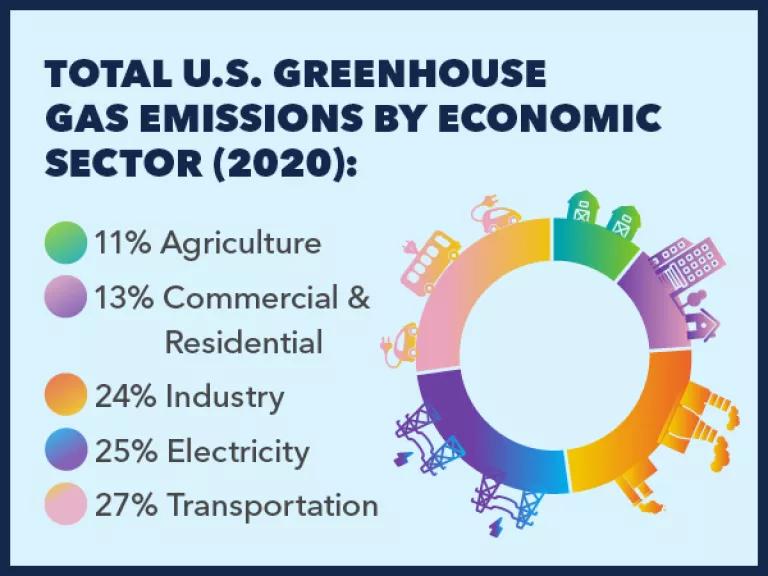
The factories and facilities that produce our goods are significant sources of greenhouse gases; in 2020, they were responsible for fully 24 percent of U.S. emissions. Most industrial emissions come from the production of a small set of carbon-intensive products, including basic chemicals, iron and steel, cement and concrete, aluminum, glass, and paper. To manufacture the building blocks of our infrastructure and the vast array of products demanded by consumers, producers must burn through massive amounts of energy. In addition, older facilities in need of efficiency upgrades frequently leak these gases, along with other harmful forms of air pollution .
One way to reduce the industrial sector’s carbon footprint is to increase efficiency through improved technology and stronger enforcement of pollution regulations. Another way is to rethink our attitudes toward consumption (particularly when it comes to plastics ), recycling , and reuse —so that we don’t need to be producing so many things in the first place. And, since major infrastructure projects rely heavily on industries like cement manufacturing (responsible for 7 percent of annual global greenhouse gas), policy mandates must leverage the government’s purchasing power to grow markets for cleaner alternatives, and ensure that state and federal agencies procure more sustainably produced materials for these projects. Hastening the switch from fossil fuels to renewables will also go a long way toward cleaning up this energy-intensive sector.
The advent of modern, industrialized agriculture has significantly altered the vital but delicate relationship between soil and the climate—so much so that agriculture accounted for 11 percent of U.S. greenhouse gas emissions in 2020. This sector is especially notorious for giving off large amounts of nitrous oxide and methane, powerful gases that are highly effective at trapping heat. The widespread adoption of chemical fertilizers , combined with certain crop-management practices that prioritize high yields over soil health, means that agriculture accounts for nearly three-quarters of the nitrous oxide found in our atmosphere. Meanwhile, large-scale industrialized livestock production continues to be a significant source of atmospheric methane, which is emitted as a function of the digestive processes of cattle and other ruminants.
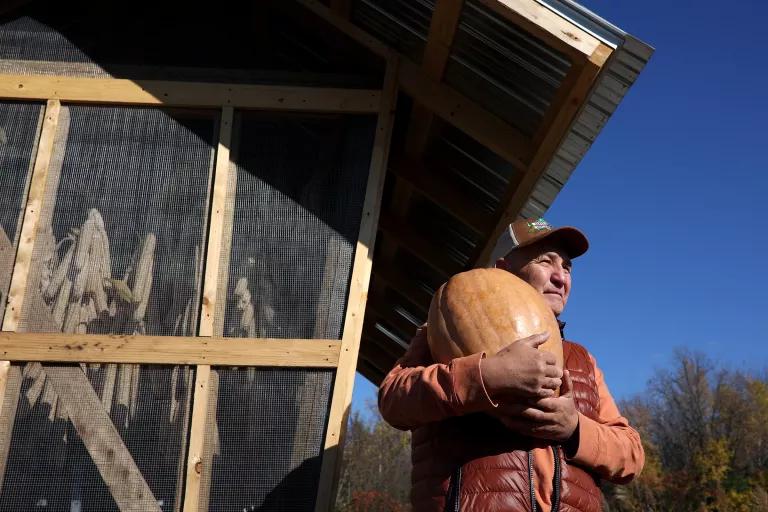
Stephen McComber holds a squash harvested from the community garden in Kahnawà:ke Mohawk Territory, a First Nations reserve of the Mohawks of Kahnawà:ke, in Quebec.
Stephanie Foden for NRDC
But farmers and ranchers—especially Indigenous farmers, who have been tending the land according to sustainable principles —are reminding us that there’s more than one way to feed the world. By adopting the philosophies and methods associated with regenerative agriculture , we can slash emissions from this sector while boosting our soil’s capacity for sequestering carbon from the atmosphere, and producing healthier foods.
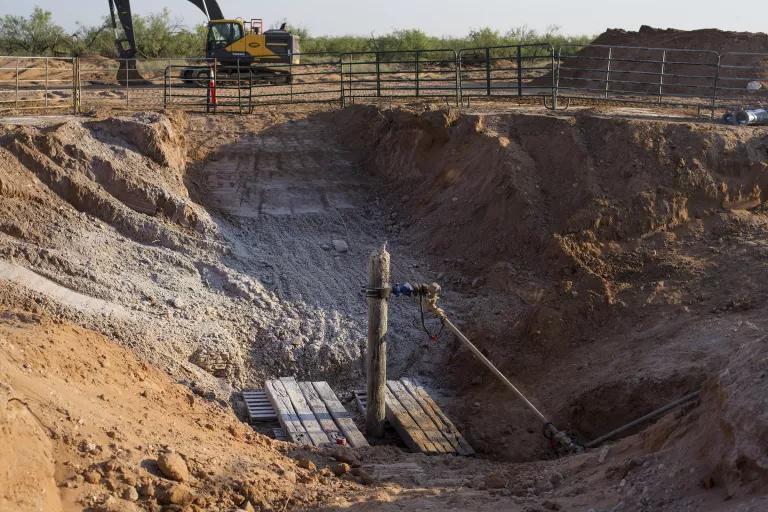
A decades-old, plugged and abandoned oil well at a cattle ranch in Crane County, Texas, in June 2021, when it was found to be leaking brine water
Matthew Busch/Bloomberg via Getty Images
Oil and gas lead to emissions at every stage of their production and consumption—not only when they’re burned as fuel, but just as soon as we drill a hole in the ground to begin extracting them. Fossil fuel development is a major source of methane, which invariably leaks from oil and gas operations : drilling, fracking , transporting, and refining. And while methane isn’t as prevalent a greenhouse gas as carbon dioxide, it’s many times more potent at trapping heat during the first 20 years of its release into the atmosphere. Even abandoned and inoperative wells—sometimes known as “orphaned” wells —leak methane. More than 3 million of these old, defunct wells are spread across the country and were responsible for emitting more than 280,000 metric tons of methane in 2018.
Unsurprisingly, given how much time we spend inside of them, our buildings—both residential and commercial—emit a lot of greenhouse gases. Heating, cooling, cooking, running appliances, and maintaining other building-wide systems accounted for 13 percent of U.S. emissions overall in 2020. And even worse, some 30 percent of the energy used in U.S. buildings goes to waste, on average.
Every day, great strides are being made in energy efficiency , allowing us to achieve the same (or even better) results with less energy expended. By requiring all new buildings to employ the highest efficiency standards—and by retrofitting existing buildings with the most up-to-date technologies—we’ll reduce emissions in this sector while simultaneously making it easier and cheaper for people in all communities to heat, cool, and power their homes: a top goal of the environmental justice movement.
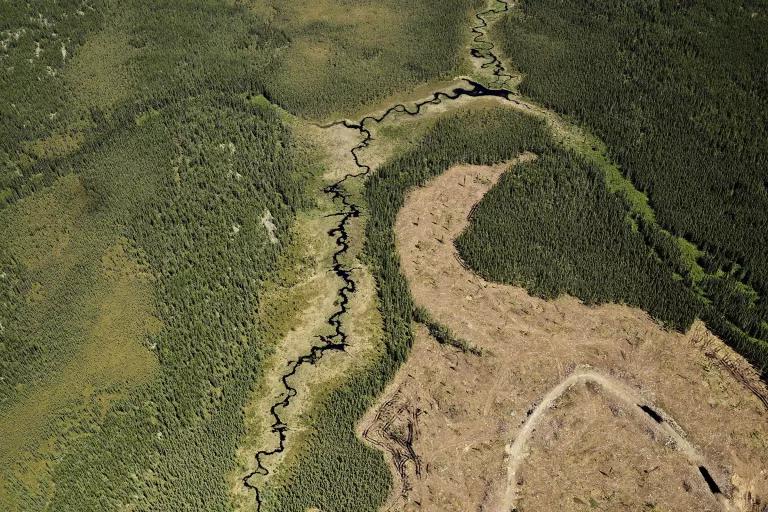
An aerial view of clearcut sections of boreal forest near Dryden in Northwestern Ontario, Canada, in June 2019
River Jordan for NRDC
Another way we’re injecting more greenhouse gas into the atmosphere is through the clearcutting of the world’s forests and the degradation of its wetlands . Vegetation and soil store carbon by keeping it at ground level or underground. Through logging and other forms of development, we’re cutting down or digging up vegetative biomass and releasing all of its stored carbon into the air. In Canada’s boreal forest alone, clearcutting is responsible for releasing more than 25 million metric tons of carbon dioxide into the atmosphere each year—the emissions equivalent of 5.5 million vehicles.
Government policies that emphasize sustainable practices, combined with shifts in consumer behavior , are needed to offset this dynamic and restore the planet’s carbon sinks .

The Yellow Line Metro train crossing over the Potomac River from Washington, DC, to Virginia on June 24, 2022
Sarah Baker
The decisions we make every day as individuals—which products we purchase, how much electricity we consume, how we get around, what we eat (and what we don’t—food waste makes up 4 percent of total U.S. greenhouse gas emissions)—add up to our single, unique carbon footprints . Put all of them together and you end up with humanity’s collective carbon footprint. The first step in reducing it is for us to acknowledge the uneven distribution of climate change’s causes and effects, and for those who bear the greatest responsibility for global greenhouse gas emissions to slash them without bringing further harm to those who are least responsible .
The big, climate-affecting decisions made by utilities, industries, and governments are shaped, in the end, by us : our needs, our demands, our priorities. Winning the fight against climate change will require us to rethink those needs, ramp up those demands , and reset those priorities. Short-term thinking of the sort that enriches corporations must give way to long-term planning that strengthens communities and secures the health and safety of all people. And our definition of climate advocacy must go beyond slogans and move, swiftly, into the realm of collective action—fueled by righteous anger, perhaps, but guided by faith in science and in our ability to change the world for the better.
If our activity has brought us to this dangerous point in human history, breaking old patterns can help us find a way out.
This NRDC.org story is available for online republication by news media outlets or nonprofits under these conditions: The writer(s) must be credited with a byline; you must note prominently that the story was originally published by NRDC.org and link to the original; the story cannot be edited (beyond simple things such as grammar); you can’t resell the story in any form or grant republishing rights to other outlets; you can’t republish our material wholesale or automatically—you need to select stories individually; you can’t republish the photos or graphics on our site without specific permission; you should drop us a note to let us know when you’ve used one of our stories.
We need climate action to be a top priority in Washington!
Tell President Biden and Congress to slash climate pollution and reduce our dependence on fossil fuels.
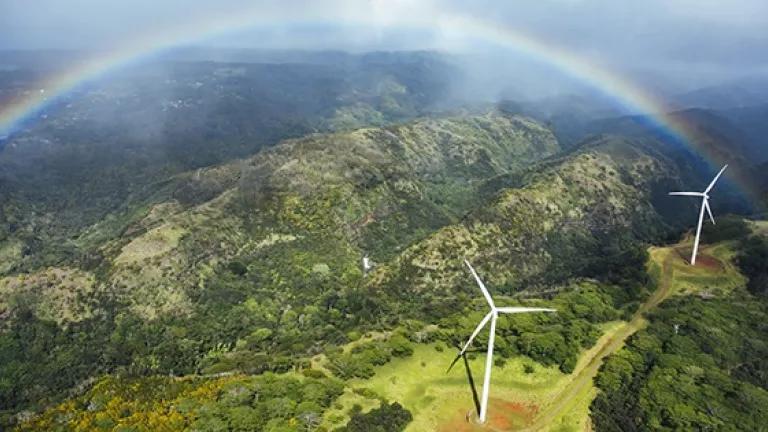
Urge President Biden and Congress to make equitable climate action a top priority
2023 was the hottest year on record, underscoring the urgency of shifting to clean energy and curbing the carbon pollution that is driving the climate crisis. President Biden and Congress have the tools to get the job done.
Related Stories
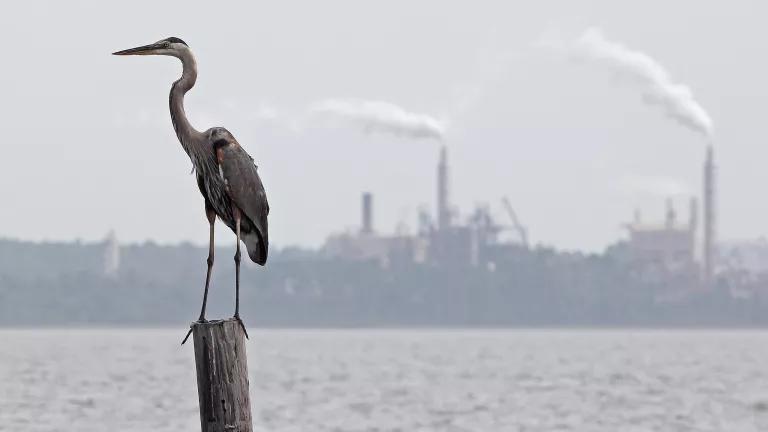
Greenhouse Effect 101
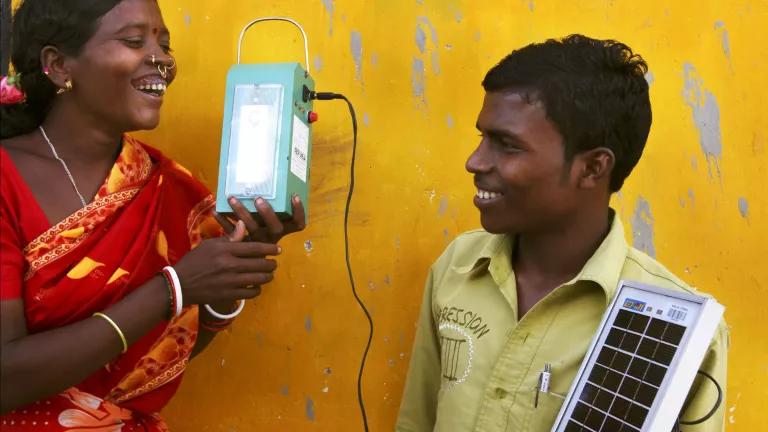
What Are the Solutions to Climate Change?
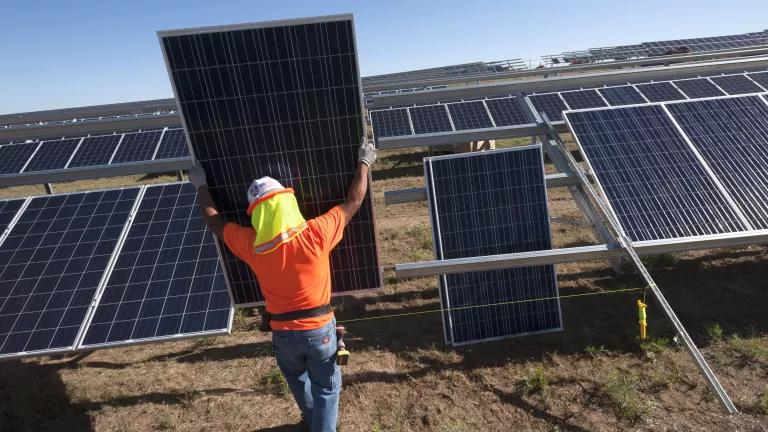
Failing to Meet Our Climate Goals Is Not an Option
When you sign up, you’ll become a member of NRDC’s Activist Network. We will keep you informed with the latest alerts and progress reports.
*** Enter the $2,000 College Transitions No Essay Scholarship Contest ***
150 Good Cause and Effect Essay Topics
October 25, 2024
Way back in the 6th and 5th centuries BCE, Heraclitus was the first to tell us that the only constant in life is change. His words still ring true today. Every day, our world changes in infinite ways, and even the smallest decisions can end up making history. Cause and effect essays are explorations of exactly this concept. They’re all about examining the domino effect, and writing a cause and effect essay is a great chance to explore the origins and consequences of a historical, social, or natural event or any other type of change that fascinates you (Continue for Cause and Effect Essay Topics and Ideas).
What is a Cause and Effect Essay?
By definition, a cause and effect essay will contain two parts. One part will be the influence (cause) and the other will be the consequence (effect). Your job as a writer is to explore the chain of events that the influence causes to occur. Depending on what topic you choose, you might need to consider the consequences of cultural trends, social changes, historical events, medical and technological inventions, or personal decisions. Your goal will be to offer your reader a clear understanding of 1) what occurred and 2) the outcome of that event.
At first glance, it may seem like a cause and effect essay assignment is primarily asking you to summarize information. But take note: a cause and effect essay is, at its core, an argumentative essay in which you will need to make a solid case for your own unique take on the connection between influences and consequences. For a strong essay, plan to do research and offer your reader many examples to back up your argument.
150 Cause and Effect Essay Topic Ideas
The options are endless, but we’ve gathered 150 cause and effect essay topic ideas to get you started on the right path. Use these ideas to start your research process or take one and put your own unique spin on it.
Ready to start exploring ideas? We’ve divided topics into 11 categories that are sure to spark your interest. Below, explore options in:
- Cause and Effect Essay Topics—Social Issues
Cause and Effect Essay Topics—Science Topics
- Cause and Effect Essay Topics—Environmental Topics
- Cause and Effect Essay Topics—Technology
- Cause and Effect Essay Topics—Mental Health
Cause and Effect Essay Topics—School and Growing Up
Cause and effect essay topics—relationships and family.
- Cause and Effect Essay Topics—Medicine
- Cause and Effect Essay Topics—History
Cause and Effect Essay Topics—Personal Topics
- Cause and Effect Essay Topics—Fun Topics
Social Issues – Cause and Effect Essay Topics
- How social media influences social norms
- The consequences of ageism on elderly well-being
- How fatphobia impacts medical care
- How gender impacts hiring practices
- The role religion plays in shaping social norms
- How economic class impacts medical access and care
- Urban planning’s relationship to city food deserts
- How educational disparities affect social mobility
- The effects of gentrification on city communities
- The effects of gender-based income inequality
- How immigration status impacts medical care
- Causes of homelessness
- The effects of LGBTQ+ media representation
- The consequences of high student debt
- What causes volcanic eruptions
- What causes tidal waves
- What causes earthquakes
- What causes aurorae borealis
- What causes tornadoes or hurricanes
- The consequences of pollution on ecosystems
- How overfishing impacts marine food chains
- How deforestation affects biodiversity
- What causes animals to become endangered
- How wildfires impact humans and the environment
- The benefits of controlled burns
- How GMO foods affect consumer health
- How immunizations affect human health
- The effects of conservation efforts
Environmental Topics
- How fast fashion impacts environmental sustainability
- How air pollution impacts health
- The effects of climate change on coastal regions
- The effects of climate change on low-income communities
- Describe how human behavior impacts the environment
- How do plastics impact the environment
- How does urbanization affect the environment
- How has climate change impacted immigration trends
- How pollution affects marine environments
- The impact of nuclear energy on the environment
- How climate change has influenced weather patterns
- How deforestation contributes to climate patterns
- How climate change alters animal behavior
- How sustainable household practices contribute to climate change relief
- How scientists protect endangered species
Technology – Cause and Effect Essay Ideas
- How AI has affected company hiring practices
- How AI has affected college admissions
- The impact of screen time on sleep
- How automation has impacted career opportunities
- The role technology plays in environmental sustainability
- The impact of technological advances on health care costs
- How technology affects interpersonal relationships
- The effect of technology on productivity
- How social media has impacted our definition of privacy
- How private companies have changed space exploration
- How 3D printing has changed manufacturing
- The effects of online retail on brick and mortar shops
Mental Health
- The effect of academic pressure on mental health
- The impact of mental health stigma on seeking mental health care
- The effects of childhood trauma on mental health
- The influence of work stress on adult mental health
- Bullying and its effects on mental health
- The impacts of mindfulness practices on happiness and well-being
- The relationship between social isolation and mental health
- Social media’s impact on mental health
- The COVID-19 pandemic’s impact on mental health
- The impact of climate change on mental health
- The impact of prejudice on mental health
- The effects of gender stereotypes on mental health
- How immigration status impacts mental health
- Poverty’s impact on access to education
- The relationship between student to teacher ratios and academic performance
- How parents influence academic success
- How parents influence students’ academic interests
- How standardized testing impacts educational outcomes
- The impact of technology on student learning
- The effect of early childhood access to educational resources on later academic performance
- How having parents with college education impacts a students’ likeliness to attend college
- How teacher education level affects educational outcomes
- The impact of extracurricular activities on student success
- How AI has affected education
- How technology has changed dating and romantic relationships
- How smartphones have impacted marriages and relationships
- How gender norms influence dating customs
- How gender norms influence household and family roles
- The role religion plays in dating customs and norms
- How sibling relationships impact family dynamics
- How growing up as a single child influences well-being
- The effect of elder care on a family’s financial well-being
- The gendered break-down of elder care responsibility
- The influence of single-parent households on childhood development
- How financial stress affects families
- How children are affected by multi-generational households
- The impact of divorce on child well-being
- The role religion plays in defining family values and norms
Medicine – Cause and Effect Essay Topics
- The effects of the opioid epidemic
- The effects of the Affordable Care Act on health care access
- How telehealth has impacted healthcare
- The effects of insulin shortages on patient health
- The impact of penicillin on global health
- Choose a medical advancement: how has it affected the medical field?
- How gender shapes medical care outcomes
- How race and ethnicity shape medical care outcomes
- How native language shape medical care outcomes
- The relationship between medical cost and patient health
- How medical malpractice impacts health care costs
- The impact of the AIDS crisis on U.S. society
- How gene sequencing has impacted disease detection and treatment
- How vaccines have impacted global health
- How birth control changed female health outcomes
- How colonization has impacted Indigenous cultures
- How colonization has impacted food and culinary traditions
- The effects of the Civil Rights Movement on social justice in the U.S.
- The effects of Black Lives Matters on social justice in the U.S.
- How early feminist movements impacted gender equality
- How the MeToo movement has impacted gender equality
- How the industrial revolution changed the world
- How the Cold War affected international relations
- How the invention of the computer altered our daily lives
- How globalization has changed economic growth and wealth disparity
- How the fall of the Roman Empire impacted Western civilization
- How the transatlantic slave trade influenced America’s development
- How 9/11 has impacted modern American society
- The causes and effects of the Vietnam War
- The causes and effects of the Iraq War
- Pick a political leader or historical figure: how has their influence shaped history?
- The relationship between music and mood
- The relationship between time spent in nature and mood
- How exercise impacts personal well-being
- How travel affects cultural perspectives
- How social media impacts self-image
- The relationship between goal setting and achievement
- The effect of procrastination on productivity
- The relationship between healthy eating and energy levels
- The impact of daily journaling
- The effect of a competitive environment on well-being and achievement
- How sibling birth order shapes personality
- The relationship between sleep habits and decision-making ability
- How daily affirmations impact well-being
- Reflect on a favorite book: how did it impact you?
- Reflect on a favorite class: how did it impact you?
Fun Cause and Effect Essay Ideas—
- The relationship between owning a pet and stress reduction
- How fashion trends reflect social values and gender norms
- How memes influence internet culture
- How social media influencers shape corporate advertising trends
- The cultural impact of superhero movies
- The relationship between youth sports and childhood development
- How e-sports have changed athletics
- How celebrities impact culture
- How social media influencers impact culture
- The impact of social media on social justice issues
- The relationship between social media and food trends
More Resources
Ready to start writing? Here are expert tips to help you nail your essay:
- 20 Best Websites for Research for Students
- 30 Topic Sentence Examples
- 50 Common Prepositions You Need to Know
- How to Improve Reading Comprehension – 10 Expert Tips
Need to master other essay types? We’ve got all you need to know:
- 160 Good Argumentative Essay Topics for Students in 2024
- Guide to the IB Extended Essay
- How to Write the AP Lang Argument Essay (With Example)
- How to Write the AP Lang Rhetorical Analysis Essay (With Example)
- High School Success
Christina Wood
Christina Wood holds a BA in Literature & Writing from UC San Diego, an MFA in Creative Writing from Washington University in St. Louis, and is currently a Doctoral Candidate in English at the University of Georgia, where she teaches creative writing and first-year composition courses. Christina has published fiction and nonfiction in numerous publications, including The Paris Review , McSweeney’s , Granta , Virginia Quarterly Review , The Sewanee Review , Mississippi Review , and Puerto del Sol , among others. Her story “The Astronaut” won the 2018 Shirley Jackson Award for short fiction and received a “Distinguished Stories” mention in the 2019 Best American Short Stories anthology.
- 2-Year Colleges
- ADHD/LD/Autism/Executive Functioning
- Application Strategies
- Best Colleges by Major
- Best Colleges by State
- Big Picture
- Career & Personality Assessment
- College Essay
- College Search/Knowledge
- College Success
- Costs & Financial Aid
- Data Visualizations
- Dental School Admissions
- Extracurricular Activities
- General Knowledge
- Graduate School Admissions
- High Schools
- Homeschool Resources
- Law School Admissions
- Medical School Admissions
- Navigating the Admissions Process
- Online Learning
- Outdoor Adventure
- Private High School Spotlight
- Research Programs
- Summer Program Spotlight
- Summer Programs
- Teacher Tools
- Test Prep Provider Spotlight
“Innovative and invaluable…use this book as your college lifeline.”
— Lynn O'Shaughnessy
Nationally Recognized College Expert
$2,000 No Essay Scholarship
Presented by College Transitions
- Win $2,000 for college • 1 minute or less to enter • No essay required • Open to students and parents in the U.S.
Create your account today and easily enter all future sweepstakes!
Enter to Win $2,000 Today!

IMAGES
VIDEO
COMMENTS
There are two main causes of climate changes - natural causes and human activities. Natural causes have influenced the earth's climates such as volcanic eruptions, ocean current, the earth's orbital changes and solar variations. The eruptions of volcanoes cause a cooling effect on the earth.
Human causes come about through agriculture, industry, transport, and use of various forms of energy at home. All these can cause small but critical changes, which can lead to effects like global warming. Effects of climate change are far reaching. They can be in physical, ecological or economic spheres. In the physical sphere, climate change ...
Climate change refers to long-term changes in temperature, precipitation, and other atmospheric conditions, often resulting from human activities such as deforestation, industrial processes, and fossil fuel consumption. The primary cause of climate change is the increased concentration of greenhouse gases in the Earth's atmosphere, trapping ...
A country's NDC outlines how it plans to reduce greenhouse gas emissions to help meet the global goal of limiting temperature rise to 1.5C and adapt to the impacts of climate change.
Human Activity Is the Cause of Increased Greenhouse Gas Concentrations. Over the last century, burning of fossil fuels like coal and oil has increased the concentration of atmospheric carbon dioxide (CO 2). This increase happens because the coal or oil burning process combines carbon with oxygen in the air to make CO 2.
Causes and Effects of Climate Change. Fossil fuels - coal, oil and gas - are by far the largest contributor to global climate change, accounting for over 75 per cent of global greenhouse gas ...
It is now more certain. than ever, based on many lines of evidence, that humans are changing Earth's climate. The atmosphere and oceans have warmed, which has been accompanied by sea level rise, a strong decline in Arctic sea ice, and other climate-related changes. The impacts of climate change on people and nature are increasingly apparent.
Natural causes of climate change. Some amount of climate change can be attributed to natural phenomena. Over the course of Earth's existence, volcanic eruptions, fluctuations in solar radiation ...
Cause and Effect Essay Topics—School and Growing Up. Cause and Effect Essay Topics—Relationships and Family. How fast fashion impacts environmental sustainability. The effects of climate change on low-income communities. Describe how human behavior impacts the environment. How sustainable household practices contribute to climate change relief.
Accessed 15 November 2024. Global warming, the phenomenon of rising average air temperatures near Earth's surface over the past 100 to 200 years. Although Earth's climate has been evolving since the dawn of geologic time, human activities since the Industrial Revolution have a growing influence over the pace and extent of climate change.